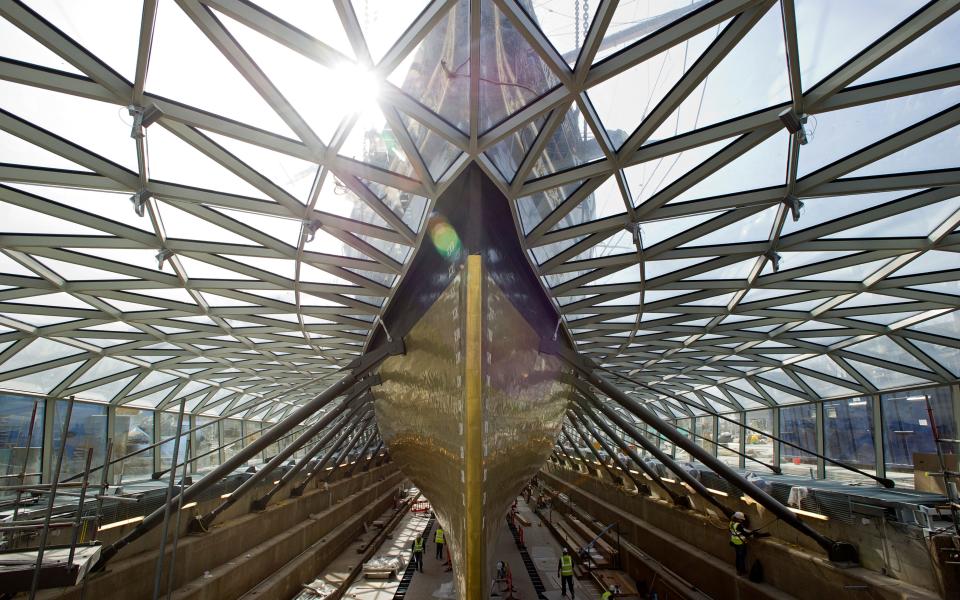Exclusive: Most new buildings should be knocked down because they are ugly, Government minister says

A Government minister has taken up the Prince of Wales’ battle against modern architecture by saying “most of what’s been built in my lifetime could be demolished without aesthetic cost”.
John Hayes, a transport minister, said vandals daub graffiti on modern buildings rather than older constructions, because people do not like them.
Mr Hayes, who has held ministerial posts in the Home Office, education and energy departments pledged that he will force new roads and railways to be designed in a “harmonious way”.
The comments were deliberately meant to chime with repeated criticism of modern architecture by the Prince of Wales which he set out in his 1989 book A Vision of Britain.

The Prince made headlines five years earlier in 1984 when he described a proposed modern extension to the National Gallery as "a monstrous carbuncle on the face of a much-loved and elegant friend".
In the speech on “Beauty” to the Respublica thinktank, Mr Hayes - a former Tory shadow housing and planning minister - said: “For at least 50 years, too often and in too many places, utility has been regarded as sufficient by callous architects, crass planners and careless politicians.
“It’s not just that form has been shaped by function, but that style has been neglected altogether. Greed and convenience have subsumed aesthetics.”

He added: “Perhaps the most easily grasped and so persuasive counter to the zealous preachers of modernism is the relationship – understood for centuries but now neglected – between the simple, God-given beauty of nature and what man can do.
“The essence of Prince Charles’ case is that there are timeless principles of good design. Such an argument would for centuries have been regarded as a priori.
“Now the wish for art to please – to inspire – has been replaced by a thirst to shock, to alarm.”
Mr Hayes took aim at modern architects “who rarely live where they have wrought havoc”.
He said: “Despite popular revulsion with much they have imposed upon us, those responsible – who rarely live where they have wrought havoc – viscously attack anyone who dares to articulate what most people know: That most of what’s been built in my lifetime could be demolished without aesthetic cost, and so bring the seductive benefit of leaving what was there before to stand proud.
“Through our appreciation of beauty, we come to terms with ourselves and others, as our senses are elevated by sensory joy.”

Mr Hayes said that it was little surprise that new modern buildings were soon covered with graffiti in towns and cities across the UK.
He said: “Which buildings will invariably be the shabbiest, the neglected, and the most disfigured with graffiti? It will be the relatively modern buildings – those built within the past 60 years.
“Daubing graffiti is a crime, but the greater criminals are those that designed the modern structures which are the daubers’ canvas. And which buildings are invariably the most-obviously treasured?
“It is older buildings, shaped by vernacular style, where architects have taken care to be in harmony with the surroundings. Where craftsmen have laboured over detail.”
It was no accident, Mr Hayes said, that when people were asked “to name the most beautiful buildings in Sheffield, most cited the two cathedrals”.

Mr Hayes said that when he was energy minister he had made “consideration about the impact on landscape” was made of the approval process for new windfarms.
He said his critics had dismissed his concerns as “irrelevant” based “on the easily grasped, though utterly crass notion, that ‘beauty is in the eye of the beholder.’
“Let’s now, once and for all, be clear. It is not beauty that changes but the ability of the beholder to appreciate it.
“This notion that beauty is relative has been used to justify much of the ugliness imposed on our towns and cities by architects, planners and developers since the Second World War.”
This concern about beauty was at the heart of “protests against the ugly buildings that developers still attempt to foist on communities against their will.
“You see it in the despair at the way so many contemporary buildings are identikit, lacking any sense of craft or character - built with no consideration of the past and no regard to the future.
“Indeed, at the heart of modern architecture, like all modern art, is the Nietzschean idea that the past is irrelevant and that we can create our own value system.”

Mr Hayes added: “Much modern architecture fails precisely because it rejects those principles of design that time has taught us delight the senses.
“Where modern design does succeed it is largely by accident. Or because, where form has at least followed function, a building has a high degree of utility.”
Mr Hayes said the city fathers of Birmingham and Manchester built “great town halls in either the neoclassical or gothic revival style” because they “wanted to build something that would last”.
Mr Hayes pledged that as transport minister he will force new roads and railways to be designed in a “harmonious way”. He also said he wanted to improve motorway service areas.
He added that he was pleased that Network Rail has now established a rail Design Advisory Panel “to embed good design in railways” and “usher in a golden age of railway design”.
He wanted “to make it an uplifting experience to navigate the roads, stations and other public infrastructure in our country.
“We spend so much of our time travelling – to work, to see friends and family We must not resign ourselves to being miserable as we get from place to place.”
A spokesman for the Prince's Foundation, which exists to promote his ideas on architecture, declined to comment.

 Yahoo News
Yahoo News 
